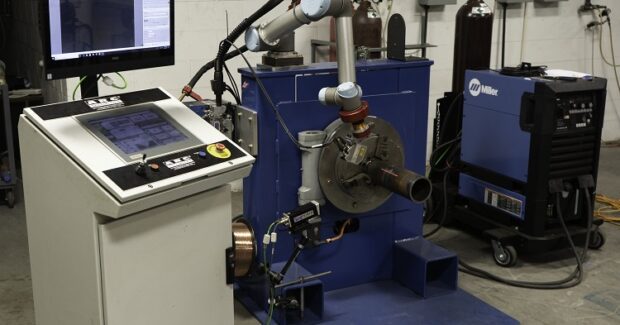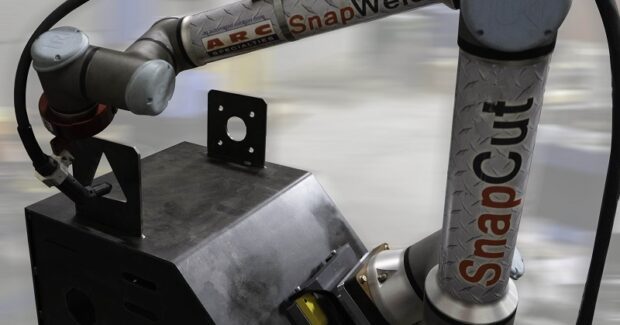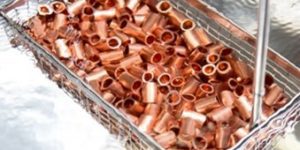Artificial Intelligence Pipe Welding System
This welding system from ARC Specialties incorporates a six-axis cobot to join the gap between two pipes by using AI to determine paths, gap width, and irregularities during the process.
Posted: September 23, 2019
In Booth B-31019, the Artificial Intelligence Pipe Welding System (AIPW) from ARC Specialties Inc. (Houston, TX) incorporates a six-axis UR5 collaborative robot arm from Universal Robots and is built to join the gap between two pipes by using artificial intelligence to determine paths, gap width, and irregularities during the process. Pre-scanning of the root opening (or gap) between the pieces to be joined is performed with a 2D laser and the data collected is used to generate the robot path and welding parameters. The robot is then able to compensate for gap variations by adjusting elements, such as oscillation, torch position, and travel speed. Using a tack weld as a reference point, multiple weld layers are added with regulated metal deposition (RMD). Pulsed spray is then used for the fill and cap passes, which employ user-selectable weave or stringer bead methods. This combination of gas metal arc welding techniques maximizes welding productivity while producing X-ray quality, full-penetration pipe welds.
Also on display will be the SnapCut system that allows non-welders and non-robot operators to easily cut shapes into three-dimensional structural steel components. SnapCut utilizes a UR cobot to manipulate a Hypertherm cutting torch to the desired positions around the cutting path. Included in the SnapCut software are standard shapes, such as squares, rectangles, circles or C-channels, that can be selected for parametric programming. The operator simply moves the cutting torch to a few locations on the cutting surface, hits run and watches the sparks fly. If you need a non-standard shape, you can program it yourself and insert the SnapCut instructions for cutting control, or have ARC Specialties add the shape to the parametric programming interface.
ARC Specialties Inc., 1730 Stebbins Drive, Houston, TX 77043, 713-631-7575, www.arcspecialties.com.
















